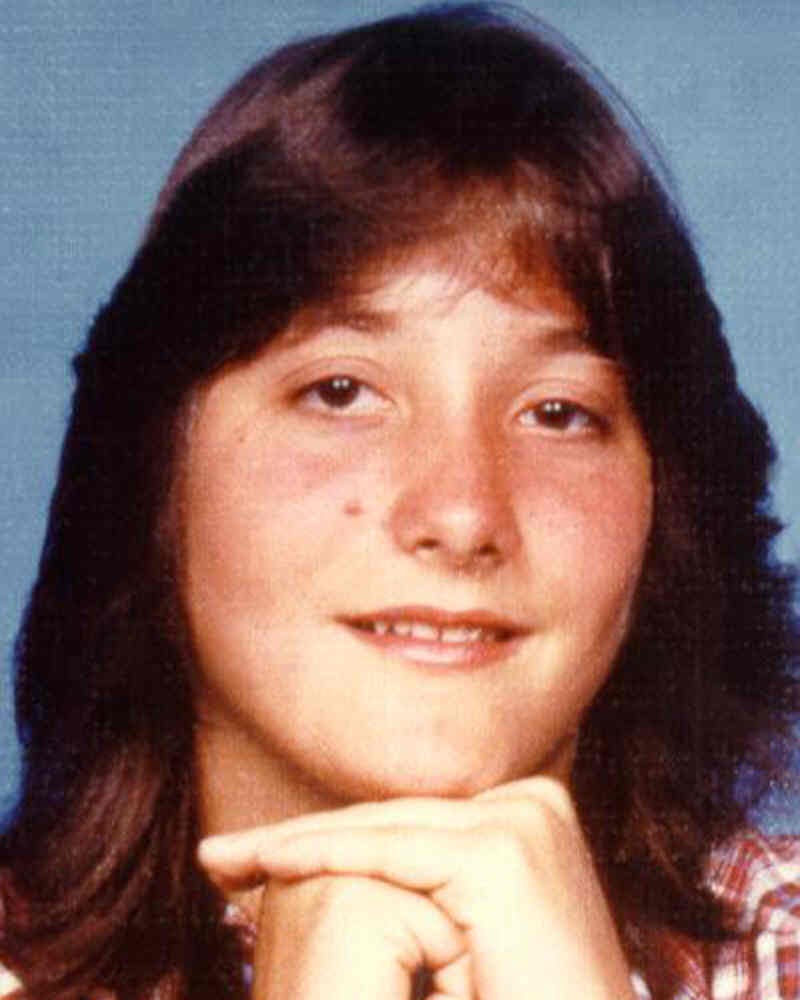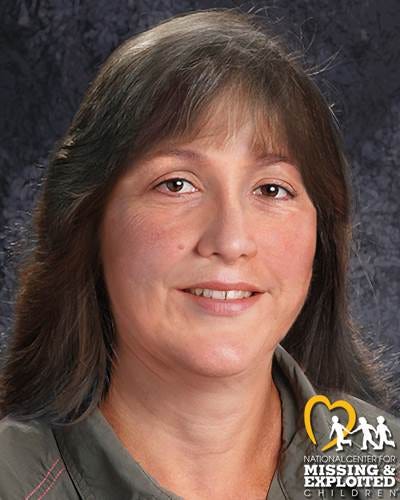“Don’t get me wrong. I wish that they would find the Sikes child and the Richerson child. I wish they would find all missing children alive and well. Unfortunately, in our case, that can’t happen, but I don’t see why my child can’t be shown the same respect as the others.”
Phyllis Doherty being interviewed about the disappearance of her daughter, Michelle Doherty.
Michelle Doherty was just 17-years-old when she disappeared near Galveston, Texas on October 5th, 1985. Earlier that year, the teen mom had been implicated in a burglary, and, seeing an opportunity, the Santa Fe (Texas) Police Department used this as leverage to convince her to wear a wire and help bust a drug ring. Soon after, rumors swirled through the area that Michelle’s life was in danger. Her lawyer advised her to leave town as soon as she finished with her court case. You see, despite her help, she was not granted any reprieve for that charge.
Michelle is one of over thirty women who are missing or murdered in the region of Texas known as the Texas Killing Fields. Originally a name given to a specific field off of Calder Road in League City, Texas, where the bodies of four murdered women were found, it has come to refer to the I-45 corridor between Houston and Galveston.
I learned about the Texas Killing Fields when I first started writing poems in honor of missing and unidentified women. Back then, two unidentified women found in that Calder Road field, one in 1984 and one in 1991, caught my attention. They’d become known as Jane and Janet Doe. I thought a lot about them over the years, long after my poem was published. In 2019, it felt like a miracle when using investigative genetic genealogy researchers finally identified them as Audrey Lee Cook, 30, from Memphis, Tennessee, and Donna Gonsoulin Prudhomme, 34, who had moved to the Houston area to get her life back on track. My co-host and I recently covered their story in an episode of our podcast she goes by Jane with actress and activist Briana Evigan giving voice to the poem I’d written for them when they were unidentified, “The Killing Fields”.
I learned of Shelley Sikes around the time I first heard of the Calder Road cases, but hadn’t connected them geographically. Shelley, who Phyllis Doherty referenced above, was working late one evening in 1986 at a popular restaurant in Galveston. When she left work to head to her boyfriend’s house, her car was forced off the road by two men in a truck. Her boyfriend and his father later found the car on an access road near I-45, but Shelley was nowhere to be found. When I wrote a poem for Shelley, much was known about her case because the men who killed her had been captured. Unfortunatley, they never revealed the exact location of her body. For Shelley, I wrote “Light/Dark,” a poem that contrasts all of Shelley’s light against the darkness she encountered. Actress Gus Birney gave voice to the poem for Shelley.
After recording those episodes for the she goes by Jane podcast, I decided that we should do more episodes tied to this area. And we have. There was the disappearance of Tot Tran Harriman in 2001. Tot had been in the area visiting family and looking for property to buy to be closer to them when she disappeared. I wrote a poem for her titled “A Theory of Water,” trying to weave Tot’s history with and love of water into the piece. We were joined by actress Porter Duong who read the poem for her at the end of the episode.
We then covered Suzanne Richerson, the other young woman Phyllis mentioned above. In October 1988, Suzanne had been a college student working two jobs, one of which was as a night clerk at a combination condominium and hotel complex. The security guard saw her as he checked out to leave. Within minutes, she was missing from her desk. In Suzanne’s case, there have been persistent rumors that she was buried near the Cloud Bayou in southern Texas. For her, I wrote the poem “Cloud Bayou Lament” which was read by actress Sonja Ball.
And that brought me to Phyllis’s daughter, Michelle. It was clear from the few news articles I could find about Michelle’s disappearance that Phyllis had been a fierce advocate for finding her daughter, but there had, indeed, been little coverage beyond reporters writing about how little coverage Michelle received.
At the time, the response from the Chief Deputy had been, “Shelly Sikes represented everyone's daughter. She had been going to college, she had a job, she had gone to work, she had gone through a normal day, and she was headed home for a normal evening after work and it was the kind of case that you may expect to happen in New York City or Los Angeles or in Houston. You don't expect it to happen in Galveston, Texas and the uniqueness of it touched the hearts and minds of every citizen.”
In our episode on Michelle, I said Michelle is also everyone’s daughter. Michelle didn’t have time to come into her own, to grow into who she wanted to be. To be brushed aside by the very law enforcement agencies that should have protected her after using her in the drug bust is reprehensible. Her story also should have touched the hearts and minds of every citizen, if only they had let it.
I wanted to tell Michelle’s story as completely as I could, but the records request we placed for her file was denied. But even without it, even in just the few news articles, I can see parts of her from her mom’s quotes, that spitfire child with a thousand freckles.
Like Suzanne, there are some potential suspects in Michelle’s disappearance and likely murder, but the case against them has never come together. Rumors circulated that Michelle may have been buried in a bean field in Alta Loma, Texas, her hometown. For Michelle, I wrote “Field Lament”. It’s a companion piece to “Cloud Bayou Lament,” and, in a traditional book of poetry, they would be on pages facing one another. This poem was read by actress Christine Solomon and the episode was released this week. I hope you’ll give it a listen. We share more details about Michelle and her disappearance. Her story deserves to be heard.
But there’s another case that still haunts me: the disappearance of Sondra Ramber from Sante Fe, Texas, on October 26, 1983. Sondra was just 14-years-old that autumn. There are very few details publicly available about her case. What is known is that on that Wednesday, her father claims she was home making biscuits. When he came home the door to the house was open and the biscuits were still in the oven. Her belongings, even her new coat, were inside. A look at historical weather data indicates, though, that Houston, the nearest city on record, had a high of 73 degrees that afternoon, making it possible that if she had left on her own she might not have grabbed it.
One prevailing thought at the time were that Sondra left to get something from the store and then disappeared. Law enforcement also believed it was possible she ran away from home and was living a new life elsewhere. One of the consistent patterns we see in telling stories of missing women and girls is that the belief someone is a runaway has a direct impact on how their cases are treated and pursued. The reason for the assumption that she ran away is unclear. Like in Michelle’s case, we requested her file and were denied. But even if this were true, that she did run away, the rationale that teenagers who are voluntary missing don’t deserve a full scale search is baffling. These are likely at risk teenagers who may need protections or interventions or support either because of something their home life or some other life circumstances. To not look for them means they may experience even more harm on their own.
Sondra’s case is now listed with the Texas Department of Public Safety as an involuntary non-family abduction. Again, it’s unclear why this designation was made.
Like the other women in girls lost in this area of Texas, I would like to share more of Sondra’s story. But I simply can’t. Like Michelle, so little coverage of her disapperance happened then, and, in the years since, that lack of coverage has not changed.
Without more information, a full podcast episode isn’t possible for me at the moment, but I still want to recognize Sondra Ramber, now missing for 41 years, almost the entirety of my life. For Sondra, a Texas lament:
Texas Lament
(Sondra Ramber, 14, missing since October 26, 1983, from Sante Fe, Texas)
On the coasts of Texas, they once used
shells to make roads, laid them down
thick until they became white strips running
through the dark. It’s times like this I wonder
what they’d look like under a full moon,
if a woman would see the train of a dress
in them, the yards of satin dragging
through the dirt. How much weight
can one girl pull through the sands
of Texas? You can’t thrive in a place
like this, you can only look for the whisper-
thin souls of other women out there
in the night. Sometimes I think about
how my heart is just a muscle,
a piece of my body that doesn’t understand
how much ache there is in this world,
or how nothing has ever felt safe.
I don’t know where to listen
for your voice. Do we gather at a bayou,
stand vigil on a field’s edge? I can’t know,
but I’m here, waiting to call you home again.
Sondra Ramber is still missing. The National Center for Missing & Exploited Children did an age progression of what Sondra might look like today. If you have any information about the disappearance of Sondra Ramber, please contact the Santa Fe Police Department (Texas) at 1-409-925-8901. Sondra’s NCMEC reference number is 691874.







